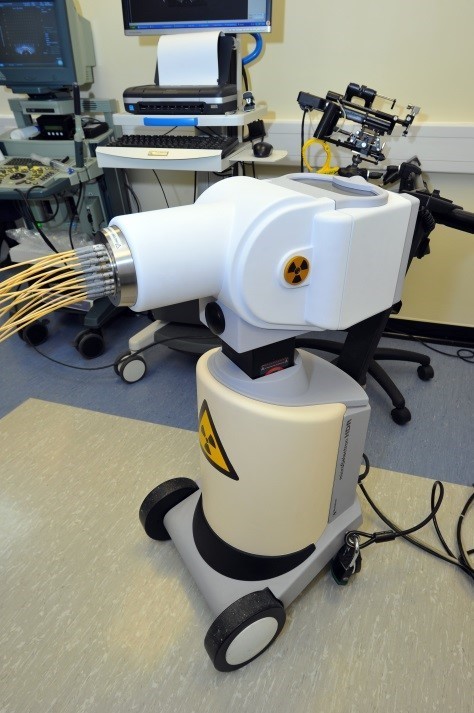Brachytherapy

Brachytherapy is a form of radiation therapy where a sealed radioactive source is placed, inside, on or near the tumour. Brachy comes from the Greek word for short. It is often thought of as ‘internal radiation therapy’. These sources produce gamma-rays, which have the same effect on cancer cells as X-rays. This treatment reduces damage to surrounding healthy tissue, thereby limiting side effects.
There are two main types of brachytherapy: low dose rate (LDR) and high dose rate (HDR).
LDR brachytherapy
Low dose rate brachytherapy can be thought of as ‘take-away’ radiation. Small radioactive ‘seeds’ are permanently implanted near or in the tumour. These stay permanently in place, releasing small amounts of radiation over several weeks or months. Most commonly in Australia and New Zealand, this technique is used for treating localised prostate cancers. Men can get back to their usual activities within a day or two of having the ‘seeds’ inserted.
HDR brachytherapy
High dose rate brachytherapy is based on similar principles to that of low dose rate brachytherapy, but the delivery is a bit different. Firstly, the radioactive sources are removed from the patient at the end of each treatment session. Secondly, the radiation sources deliver a more intense but short-lived dose of radiation during each of several (usually 1–3) sessions. HDR brachytherapy is used for more high-risk but localised prostate cancers and gynaecological cancers, amongst others. HDR brachytherapy is often given in conjunction with External Beam Radiation Therapy (EBRT).
Useful Resources
Comparing Treatment Results Of Prostate Cancer- Prostate Cancer Results Study Group- Updated June 2015
LDR Brachytherapy: Latest Advances In Prostate Therapy Treatment- BJUI Supplements
About Brachytherapy: Dedicated to patients and families
Page last updated: 11/09/20




